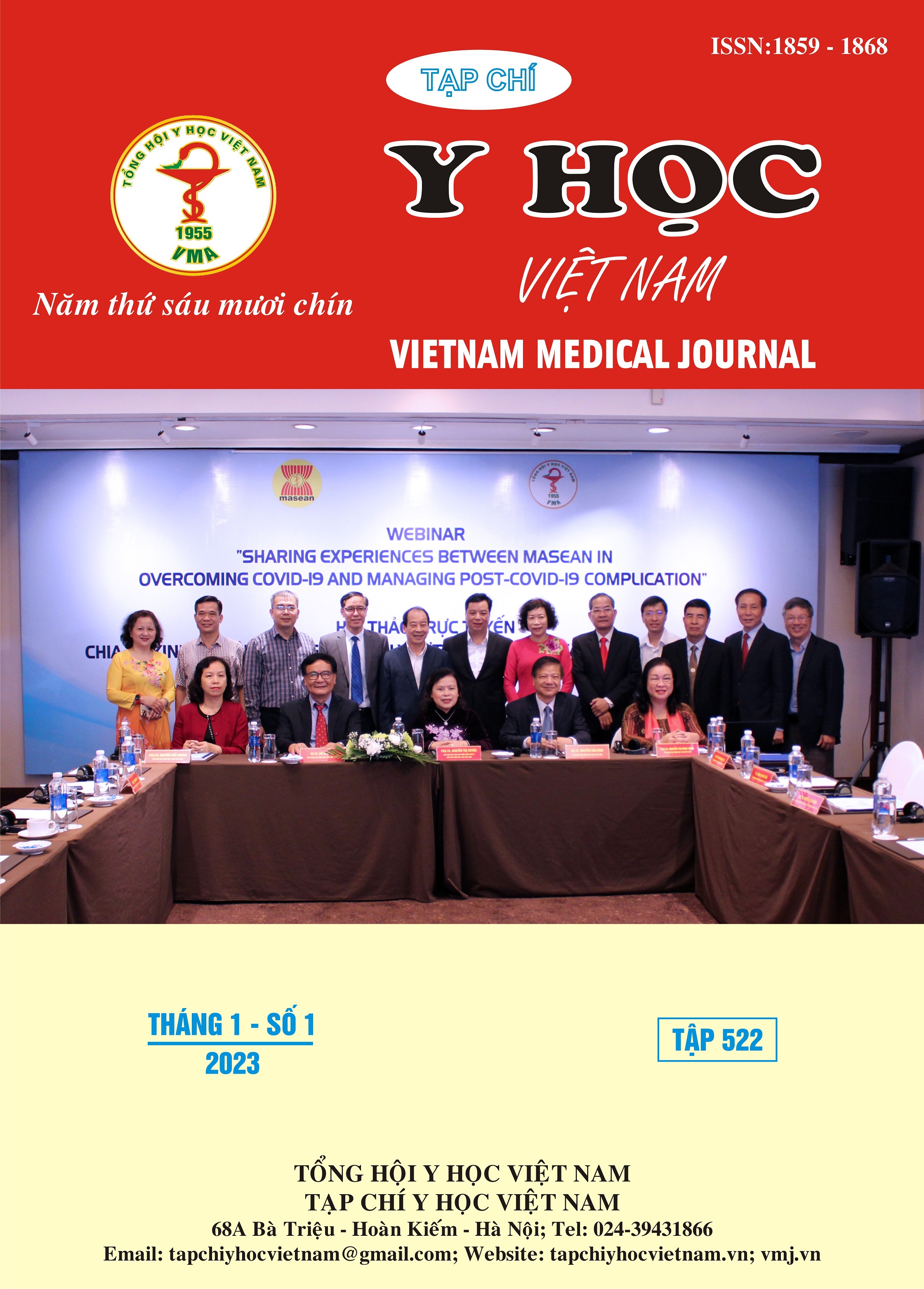CLINICAL CHARACTERISTICS, PARACLINICAL FEATURES AND TREATMENT OUTCOME OF REPERFUSION THERAPHY IN YOUNG ADULTS WITH ACUTE ISCHEMIC STROKE
Main Article Content
Abstract
Objectives: Clinical characteristics, paraclinical features and treatment outcome of reperfusion theraphy in young adults (18 -45 years) with acute ischemic stroke at the Stroke Center-Bach Mai hospital. Methods: This study retrospectively reviewed the records of all 18 to 45-year-old patients who were admitted to the Stroke center of Bach Mai hospital from January 2021 to May 2022. Outcome included modified Rankin Scale after 90 days, expanded throbolysis in cerebral infarction score, and symptomatic intracranical hemorrhage. Results: There were 171 patients, male/female ratio was 2,2/1 the average age was 38±5,9 years. Stroke etiologies in young patients included large artery atherosclerosis (32,1%), cardio-embolism (17%), and embolic stroke of undetermined source (31%). In the survey of risk factors, the common risk factors were smoking (24,6%), high blood pressure (23,4%), hyperlipidemia (15%). In our survey, 53,8% of the patients had triglyceride levels above 1.7 mmol/l. There were 33,3% of patients receiving reperfusion therapy. Results of reperfusion therapy: successful reperfusion (expanded throbolysis in cerebral infarction score 2b-3) was achieved in 100%; The symptomomatic intracranial hemorrage rate was 14%; after 90 days, Good functional outcome (modified Rankin Scale 0-2) was achieved in 82,4%; mortality rate was 5,3%. Glasgow score at admission≤ 13, high NIHSS, low ASPECT and posterior circulatory infarction were associated with mortality rate with p<0,05. Conclusions: Our study found that the common risk factors of young adults with acute ischemic stroke were smoking (24,6%), high blood pressure (23,4%), hyperlipidemia. These patients receiving reperfusion therapy at Stroke center-Bach Mai hospital had a good outcome at three months hospital discharge. Glasgow score at admission≤ 13, high NIHSS, low ASPECT and posterior circulatory infarction were associated with mortality rate.
Article Details
References
2. Mehndiratta MP. Stroke in the young: Newer concepts in etiopathogenesis and risk factors. Astrocytes. 2018;5(1):1-4.
3. Urvish K Patel, Mihi Dave: Risk Factors and Incidence of Acute Ischemic Stroke: A Comparative Study Between Young Adults and Older Adults, curius 2021
4. Boot E, Ekker MS, Putaala J, et al, Ischaemic stroke in young adults: a global perspective. Journal of Neurology, Neurosurgery & Psychiatry 2020;91:411-417.
5. Park WB, Cho JS, et al. Comparison of epidemiology, emergency care, and outcomes of acute ischemic stroke between young adults and elderly in Korean population: a multicenter observational study. J Korean Med Sci. 2014 Jul;29(7):985-91.
6. Leo, L.L.-L., Chen, et al. Outcomes in young adults with acute ischemic stroke undergoing endovascular thrombectomy: A real-world multicenter experience. Eur J 2021
7. Perera KS, de Sa Boasquevisque D, et al. Young ESUS Investigators. Evaluating Rates of Recurrent Ischemic Stroke Among Young Adults With Embolic Stroke of Undetermined Source: The Young ESUS Longitudinal Cohort Study. JAMA Neurol 2022 May 1;79(5):450-458.
8. Brouwer J, Smaal JA,et al. MR CLEAN Registry Investigators. Endovascular Thrombectomy in Young Patients With Stroke: A MR CLEAN Registry Study. Stroke. 2022 Jan;53(1):34-42.


